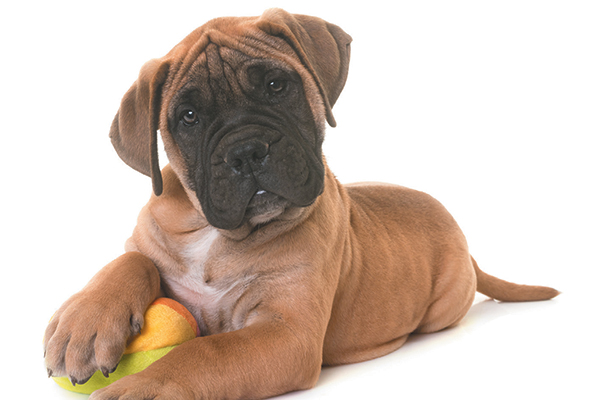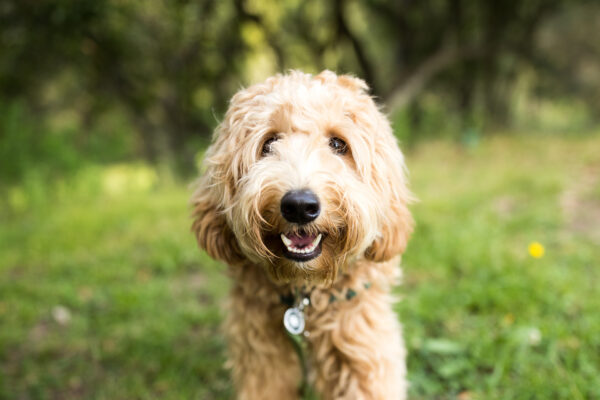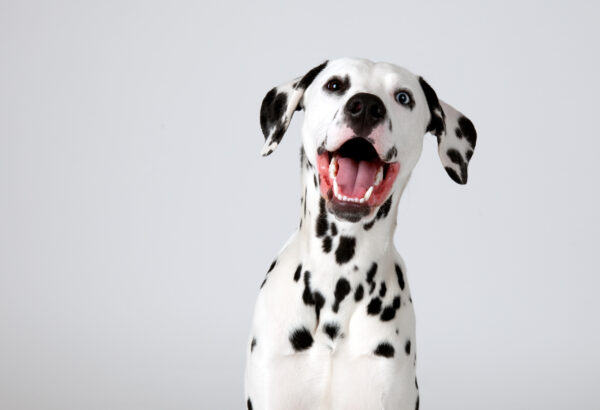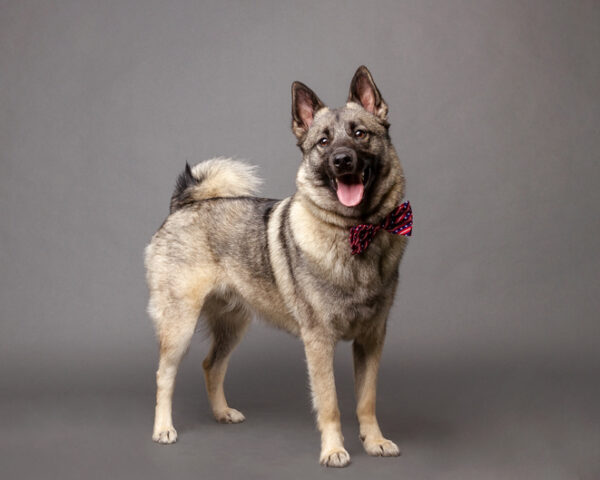Bullmastiffs are the perfect example of a gentle giant in the dog world: muscular and powerful, yet faithful and kind unless provoked. He is an English creation that has found a loyal following in this country. Here are 9 fun factoids about the strong and silent Bullmastiff.
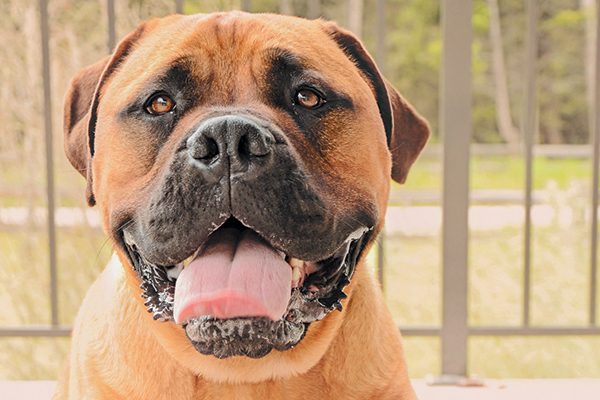
The 9 Facts About Bullmastiffs
1. Bullmastiffs were developed for a need
What we know of the Bullmastiff’s history dates back to mid-19th century England. Gamekeepers needed a dog that would help them rid the large estates and game preserves of poachers; one that could cover ground quietly and pin the trespassers without harming them. Breeders crossed the Mastiff with the now-extinct Old English Bulldog to ultimately come up with the Bullmastiff.
2. They’re a blend of Mastiffs and Bulldogs perfect recipe
The Bullmastiff represents an ideal blend of 60 percent Mastiff and 40 percent Bulldog. The gamekeepers’ goal was to create a dog that was faster and more aggressive than the Mastiff, yet bigger and less ferocious than the Old English Bulldog.
3. Bullmastiffs are very adaptable
This is a sizeable breed, with adult males reaching a height of 25 to 27 inches at the shoulder and weighing 110 to 130 pounds; females reaching a height of 24 to 26 inches at the shoulder and weighing 100 to 120 pounds. Yet Bullmastiffs are mellow and laid-back, not requiring much grooming or exercise, and they make wonderful companions for urban owners, adapting well even to apartment living. They are quiet dogs and rarely bark.
4. They’ve got great temperaments
The breed standard for the Bullmastiff describes its temperament as “fearless and confident yet docile. The dog combines the reliability, intelligence and willingness to please required in a dependable family companion and protector.” They are a lovely companion to live with, gentle with the smallest child yet exuding an air of protective authority.
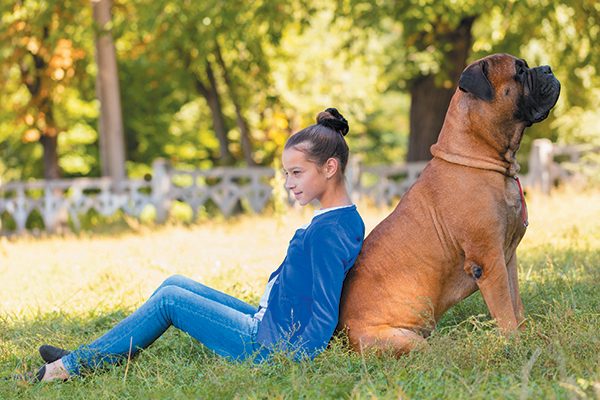
5. Bullmastiffs are very easy to train
Bullmastiffs are powerful dogs, yet sensitive. Given the breed’s strength and inclination to be independent, early socialization and training are essential. Bullmastiffs are natural guardians of their people and property. No guard training is necessary; a Bullmastiff will respond appropriately if its family is threatened.
6. They come in a few different colors
The most common color seen in Bullmastiffs is fawn with a black face mask. Bullmastiffs also come in darker red shades. Brindle Bullmastiffs have black stripes over a fawn or red background. Although they are less often seen today, the dark brindles were preferred by the gamekeepers who created the breed. The stripes provided the dogs with better camouflage, particularly at night, hence the breed’s nickname of Gamekeeper’s Night Dog.
7. Bullmastiffs have shorter life spans
For all the Bullmastiff’s virtues as a devoted companion and guardian, he shares with many other large- and giant-sized breeds the heartbreak of a shorter life span. While there are exceptions, a Bullmastiff typically lives for 7 to 8 years.
8. The Rocky movies popularized Bullmastiffs
Many dog-loving movie fans got their first look at a Bullmastiff in Sylvester Stallone’s original Rocky. The down-and-out boxer had a Bullmastiff sidekick. Interestingly, it was Sly Stallone’s own dog, Butkus.
9. Other celebrity Bullmastiffs
Singer and songwriter Bob Dylan owned a Bullmastiff, Brutus, who appeared regularly with him. In the reality TV series Little People Big World, the Roloff family owned a Bullmastiff named Rocky. And in the world of sports, the Cleveland Browns football team has a Bullmastiff named Swagger as its live mascot.
Read more about dog breeds on Dogster.com:
- Are Blue Heelers Really Blue? Are Blue Heelers the Same as Australian Cattle Dogs?
- What to Know About the Small But Mighty Pomeranian
- Come See the Cutest Photos of Doberman Puppies
Featured Image Credit: CynoClub/Thinkstock.
Height
24 - 27 inches (60.96 - 68.58 cm)
Weight
100 - 130 pounds (45.36 - 58.97 kg)
Traits
- Bold
- Powerful
- Alert
- Intelligent
- Sweet
- Laid-back
History
To control poaching on estates and game preserves in the 1860s, English gamekeepers mixed the English Bulldog with the Mastiff and, voilà, the Bullmastiff came to be. Their combination of athleticism and strength proved to be very successful in policing huge tracts of land. However, instead of attacking trespassers, Bullmastiffs would hold them down or corner them until their masters arrived. When the poaching problem dwindled, Bullmastiffs continued to be in demand, getting work as police dogs, military dogs and of course lovable companions.
Look
Bullmastiffs have a strong, vigorous build with an unwavering alertness. Their heads are wide and wrinkled, and their muzzles are short and dark. They have medium-sized, dark hazel eyes that have a sharp and shrewd expression. Their V-shaped ears hang close to their cheeks. Bullmastiffs have strong, slightly arched necks that slope down to balanced and level backs. They have well-developed legs and strong, tapered tails. Their short, thick coats can come in fawn, red or brindle with black coloring on the head.
Live
Bullmastiffs are a superb blend of guard dog and well-mannered gentleman. They may look intense, but they are actually gentle, laid-back pals, happy to play with children or roll around on the carpet. Bullmastiffs are people-oriented dogs, not loners—they crave attention and can become very attached to their families. Your Bullmastiff will want to be involved in every group occasion, and then some.
Bullmastiffs are devoted protectors of the home. They have a self-assuredness that can come in very handy when duty calls. However, they are more likely to hold an intruder down than hurt him. Also, because their instinct is to protect you, Bullmastiffs are more likely to react to an intruder when you’re home. When you’re not home, they might not react at all.
These dogs are protective and loving companions to children. Parental supervision is a must, however, when younger children are playing with a Bullmastiff, simply because of their size.
Know
Bullmastiffs require a physically and mentally tough master—a handler who can teach them how to manage their own size and strength. They are generally even-tempered, but it’s always a good idea to keep them on a leash in public.
Bullmastiffs will do fine in apartments as long as they get enough exercise. Daily 30-minute walks will keep them happy and healthy. When it’s especially hot or cold outside, make sure they don’t overexert themselves: Bullmastiffs are sensitive to extreme temperatures.
A healthy Bullmastiff can live as long as 9 years. Common health issues include hip dysplasia and eye problems. Because they are prone to bloat, try not to feed them large meals.
Companions
- Singles
- Families with older children
- Active people
- Experienced dog handlers

